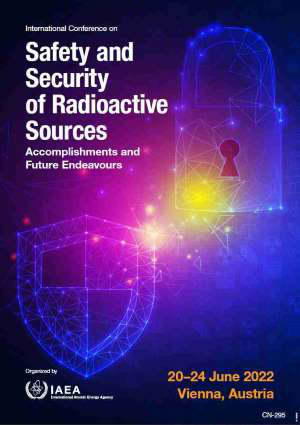Speaker
Description
Bangladesh is committed to the peaceful use of nuclear energy for the socioeconomic development of the country and has signed necessary protocols and additional protocols of IAEA. The first use of radioactive materials in Bangladesh was started in early sixties of the last century for the treatment purposes in hospitals. Since then, sealed radioactive sources (SRSs) have found diversified and incremental uses in the country in the field of medicine, industry, agriculture, food irradiation, research and education etc. The increased usage of radioactive sources has resulted in a significant increase of disused radioactive sources (DSRSs) [1]. The inventory contains category 1 to category 5 sources with both short- and long-lived radionuclides [2]. Owing to various difficulties and absence of any national policy for reuse/recycle, the number of DSRSs is increasing day by day. Therefore, immobilization of the DSRSs has been essential for minimizing the volume and making space for accepting more DSRSs from the users as well as for the safety of sources.
The SRSs used in different fields are now under regulatory control but sources used in smoke and lightning detectors are still to take under control. Bangladesh has basic regulatory infrastructure including Nuclear Safety and Radiation Control Act, 1993 (NSRC Act-1993) and Nuclear Safety and Radiation Control Rules 1997, (NSRC Rules-1997) forming the basis of nuclear regulatory infrastructure in the country [3]. However, detail regulation is under progress.
An option for the predisposal management as well as disposal of DSRSs is needed to be found out as the eventual solution of the problem. Moreover, for a reliable and efficient management of SRSs and DSRSs capacity building in human resources, physical infrastructure, national policy, legal framework and record-keeping system of the sources is a prerequisite.
In order to address the abovementioned challenges, various activities are underway with the assistance of IAEA and other bilateral partners. Accordingly, development of relevant supplemental legal infrastructure, building up human capabilities as well as physical infrastructure is going on which will facilitate an effective, efficient, safe and reliable management of SRSs and DSRSs in the country.
Regarding development of regulatory framework a national policy document addressing the management of SRSs and DSRSs has been developed and approved by the Government. Bangladesh Atomic Energy Regulatory Act-2012 (BAER Act-2012) had been passed in the parliament in 2012 replacing the NSRC Act 1993 under which an independent regulatory authority named Bangladesh Atomic Energy Regulatory Authority (BAERA) had been established in 2013.
Proper management of DSRSs recently, a semi-pilot-scale centralized radioactive waste processing and storage facility (CWPSF) has been established with the support of IAEA for the predisposal management and interim storage of radioactive wastes including DSRSs as shown in Fig. 1. This is a licensed facility from BAERA for transportation and management of RWs and DSRSs including interim-storage.
Software-based Radioactive Waste Management Registry (RWMR) system developed by IAEA has been installed for a reliable management of sources as shown in Fig. 2. Qualified and competent human resources are prerequisite for the efficient management of SRSs and DSRSs and now is under active consideration. Besides, in order to enhance the safety of the SRSs all category 3-5 sources were conditioned and stored safely at the CWPSF with the IAEA expert assistance. Conditioning operation, storage capsules for sources and conditioned sources in 200L drums are shown Fig. 3. A formidable challenge regarding RWM is mounting in future. Therefore, enhancement of legal, infrastructural and human resources must be planned and achieved within a stipulated time along with ancillary new regulations for the successful solution of problems with SRSs and DSRSs.
| Country OR Intl. Organization | Bangladesh |
|---|

